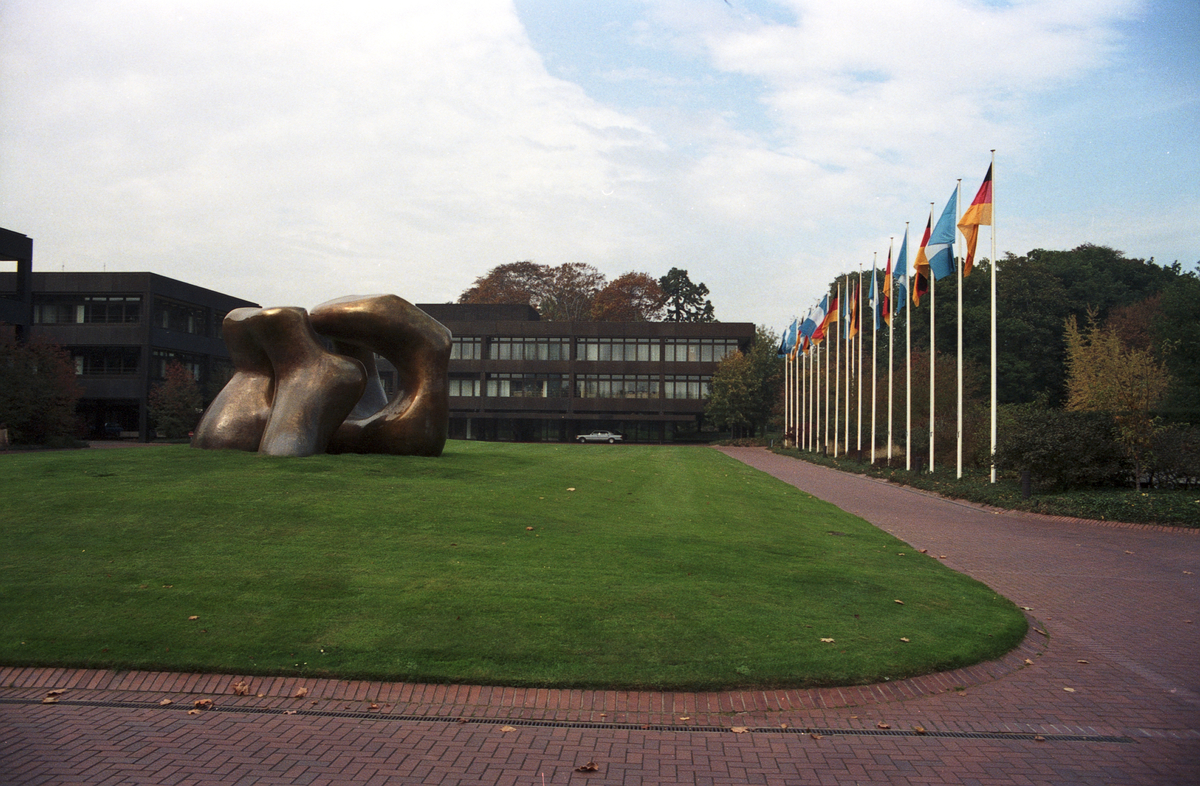Abstract
Deliberately devoid of representational elements, the new federal
Chancellery by Stieldorf Architects was supposed to project an air of
restraint. Understatement characterized all public buildings in Bonn,
but sober architecture was not without its critics. For architecture
critic Heinrich Klotz, the fixation on pragmatic rationalism in public
buildings resulted in “an architecture of the General Accounting Office”
[Rechnungshofarchitektur]. Sheathed
in dark bronze-colored aluminum panels, the Chancellery was at best
indistinguishable from any corporate headquarters of the time. In
Klotz’s more critical estimation, it was reminiscent of a catafalque.
The photograph below shows the Chancellery, completed in 1976, with the
sculpture Large Two Forms, by British
artist Henry Moore. The sculpture, which was installed in the
Chancellery’s forecourt in 1979, was chosen after Willy Brandt had
vetoed plans for a globe-like structure. Brandt feared that such a
sculpture might be misinterpreted as a sign of Germany’s renewed
aspirations in the international arena. [See Michael Z. Wise,
Capital Dilemma: Germany’s Search for a
New Architecture of Democracy. Princeton, 1998, pp. 31-32 and
plates.]
